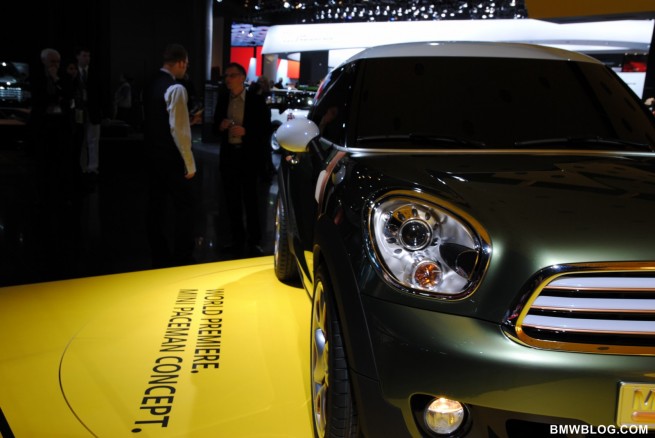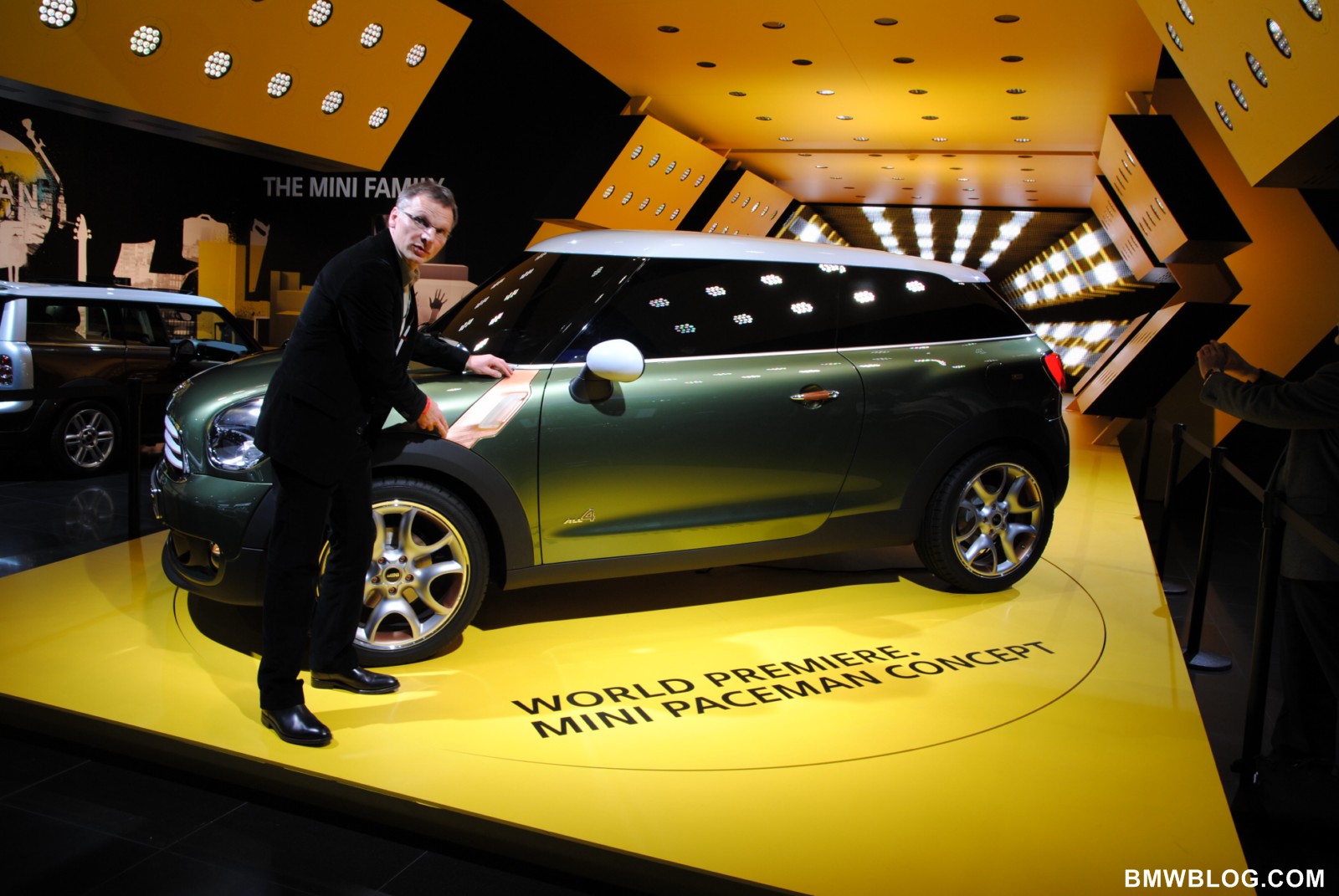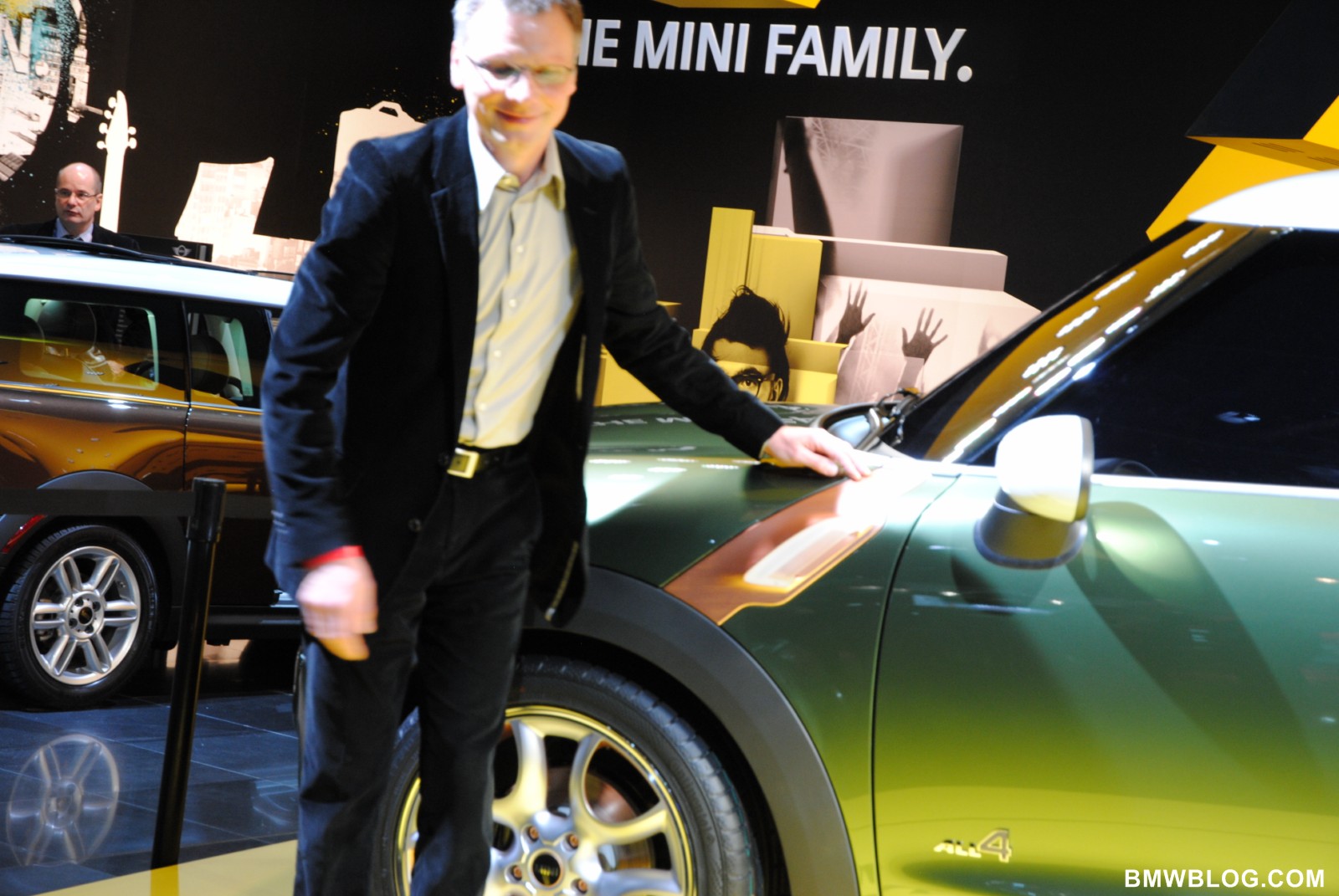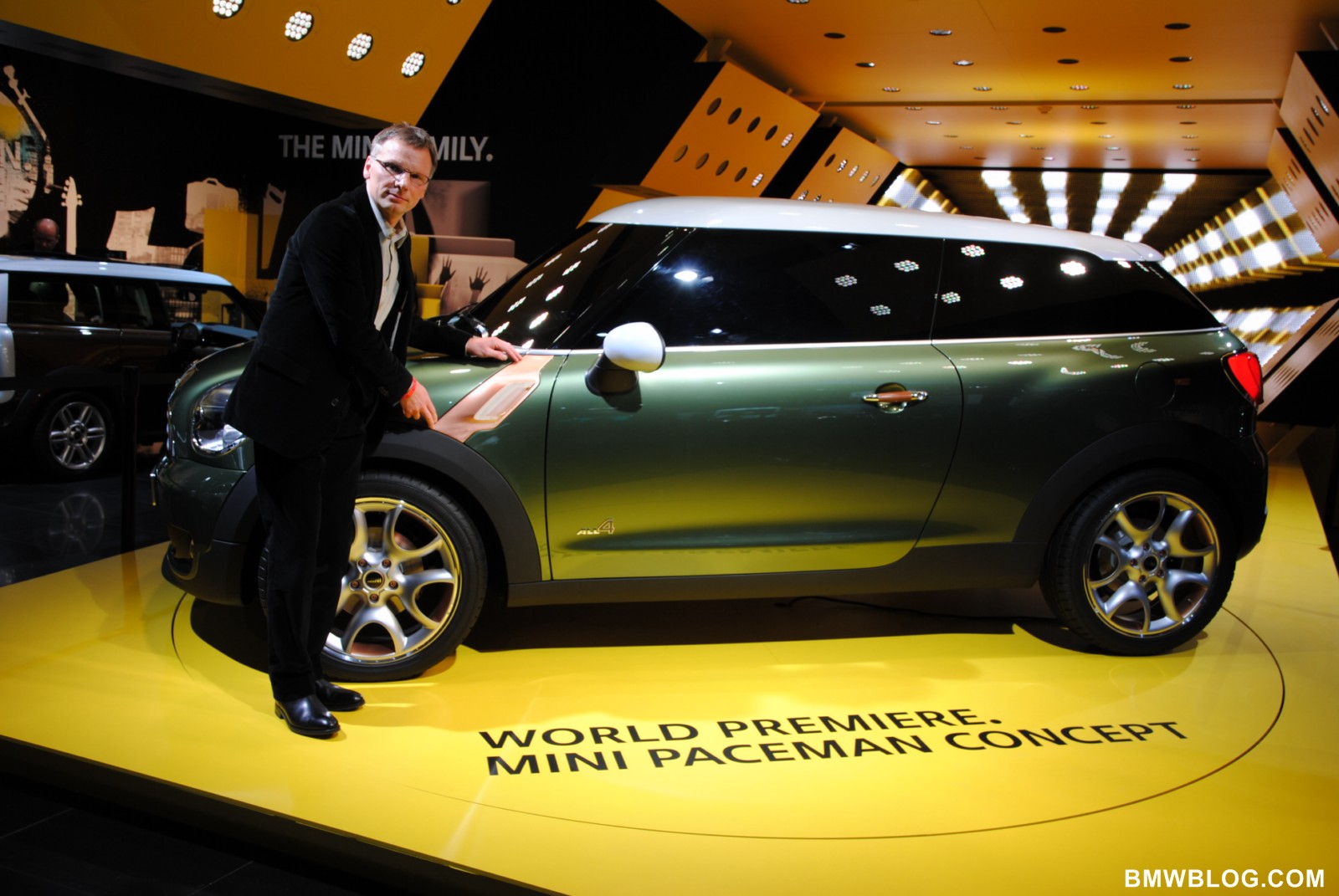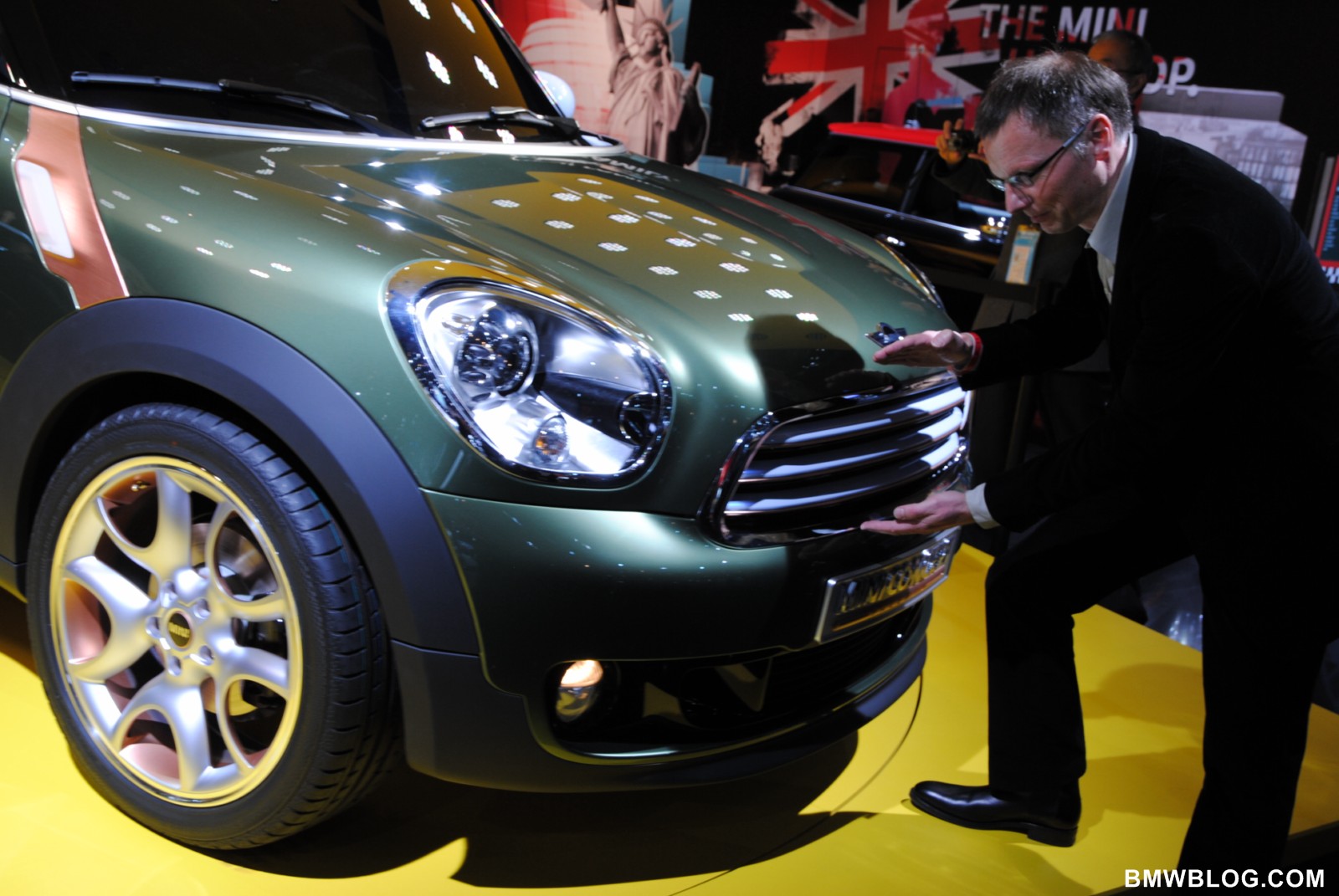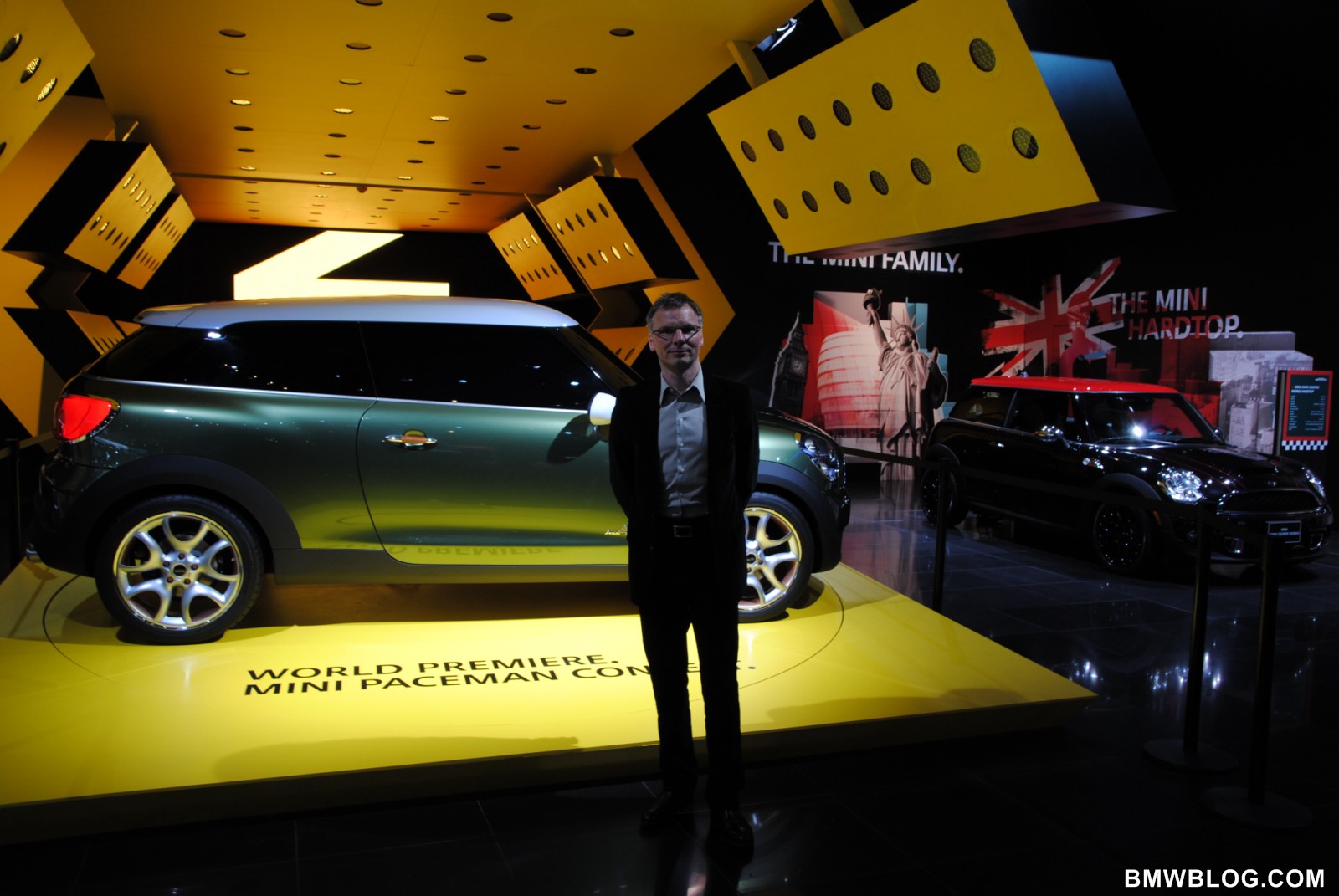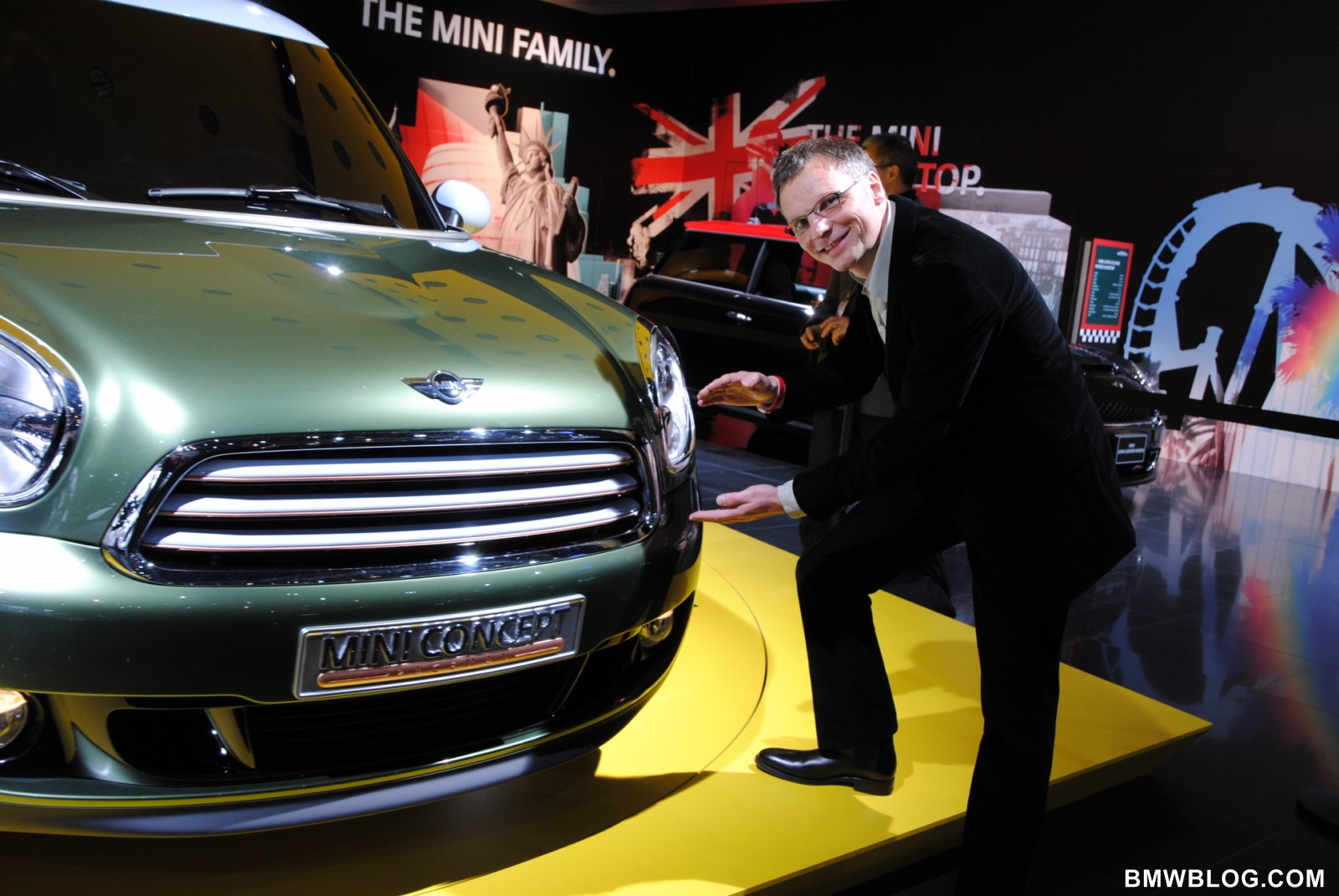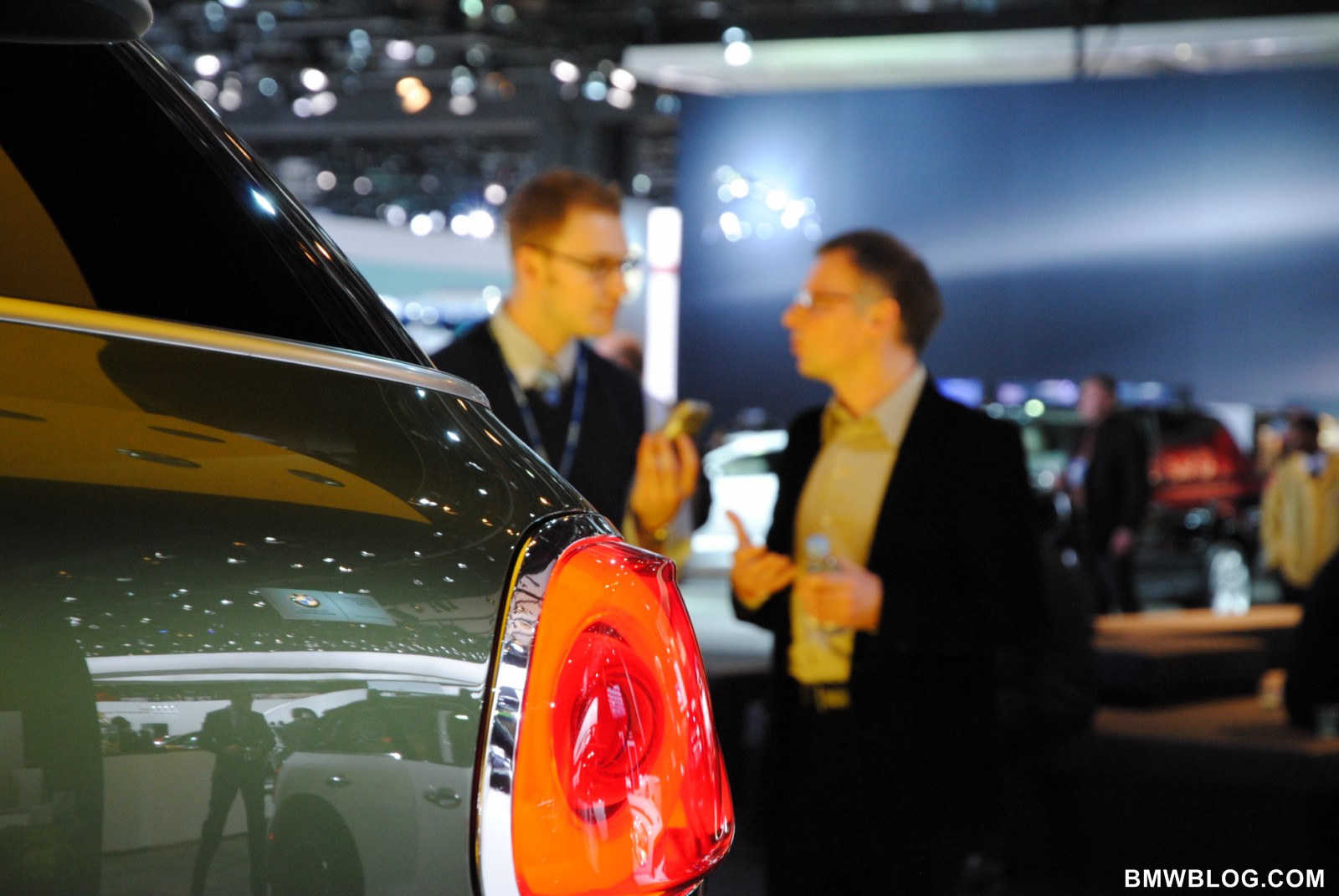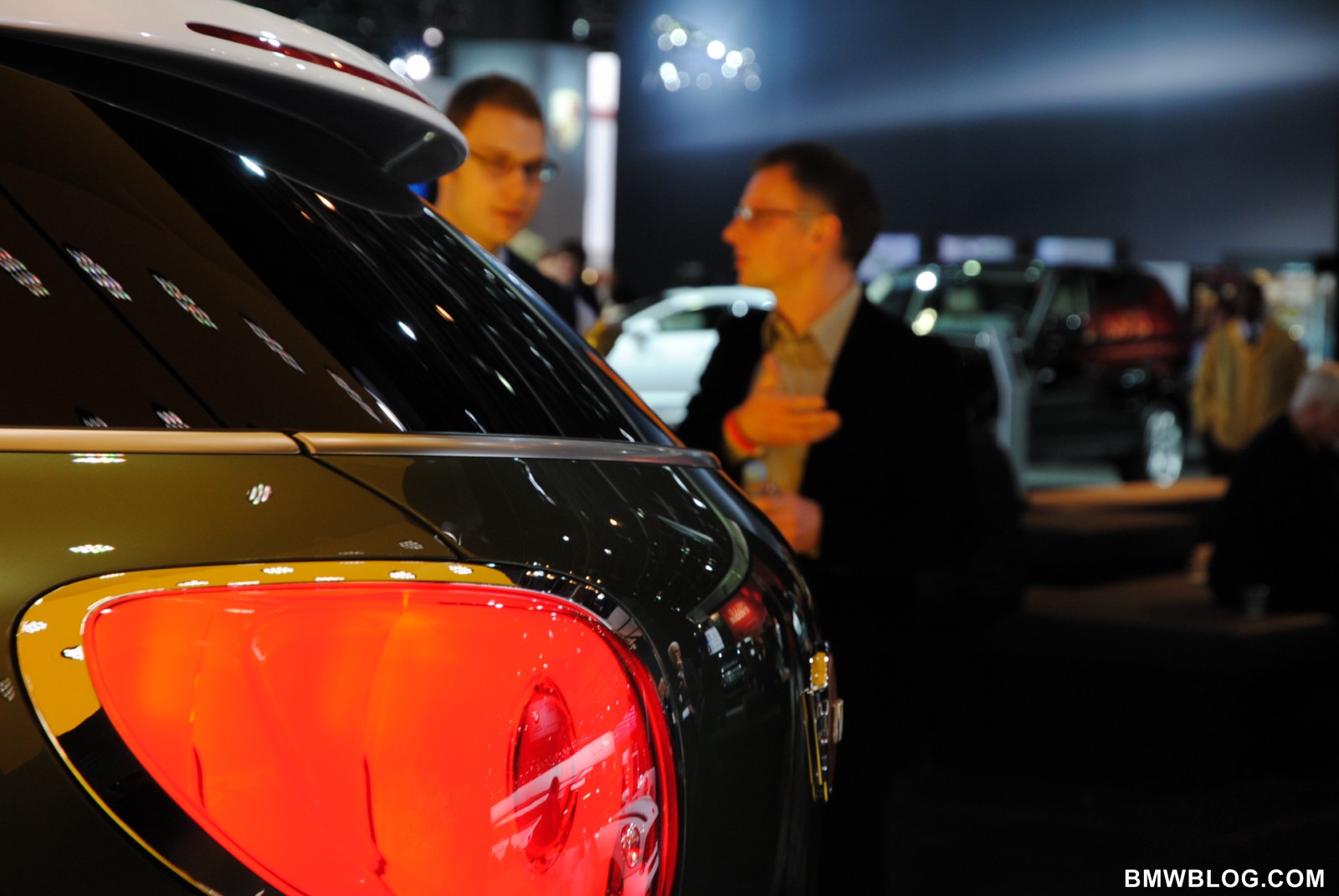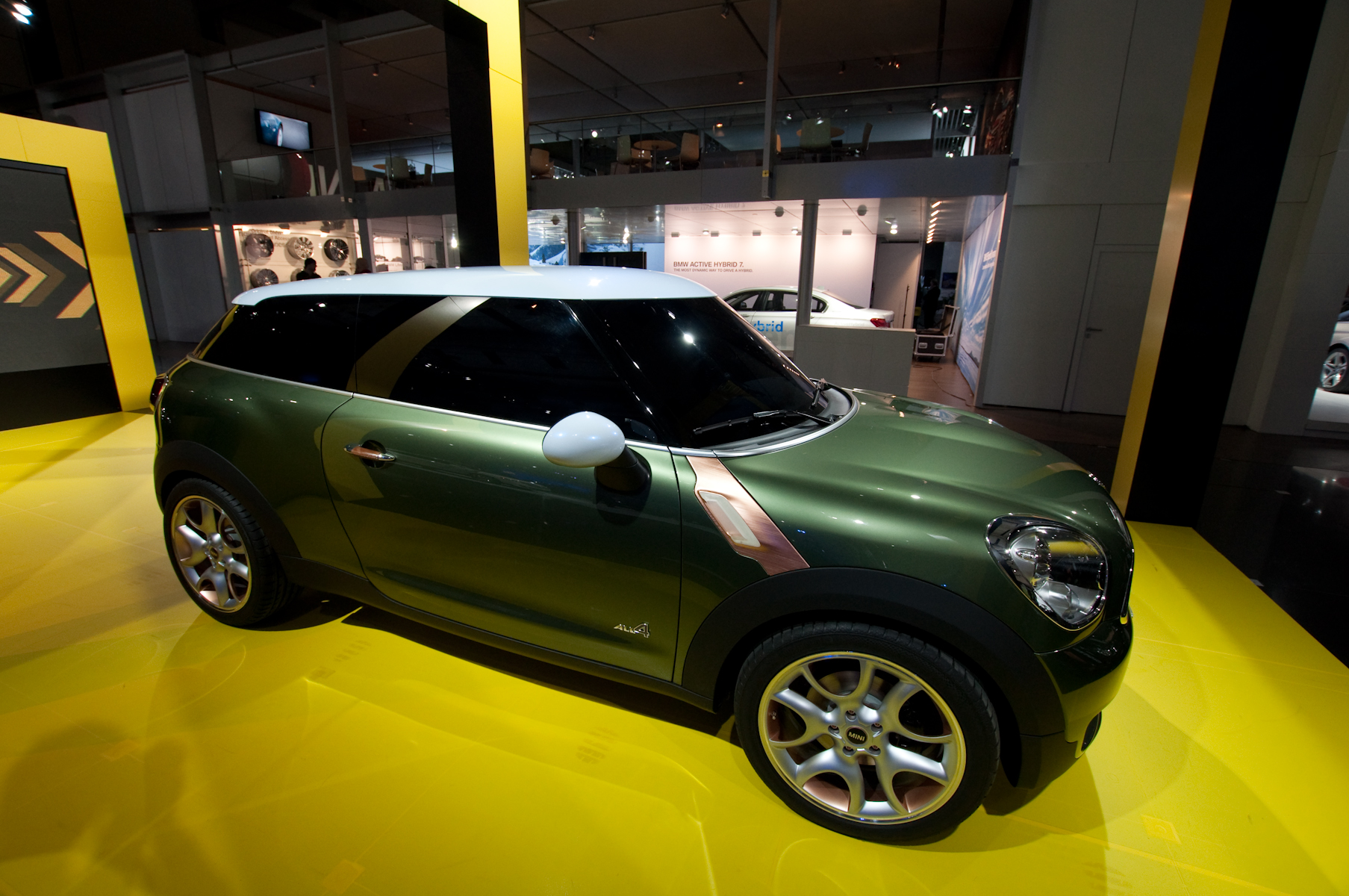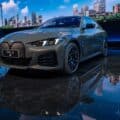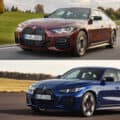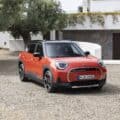Thousands of workers have dismantled the elaborate displays of the 2011 North American International Auto Show, but before closing the curtains, we bring you one last interview from the Detroit show. Last is certainly not least in this case as we were afforded the opportunity to speak with Marcus Syring, MINI head of exterior design.
MINI has been turning stereotypes on their heads for some time, and tossing industry norms into a psychedelic car-salad of colour, fun and character. The MINI Rocketman concept? Say no more.
As we enter into an exciting new chapter of MINI design and watch the brand broaden the plurality of their lineup, it is always fascinating to speak with the men and women behind the cars. Marcus was enthusiastic about the cars he has designed, including the Paceman concept on display in front of us during our conversation. His passion for MINI is obvious and we’re confident you will enjoy our exclusive interview from the show floor.
 BMWBLOG: What was your vision when designing the MINI Paceman?
BMWBLOG: What was your vision when designing the MINI Paceman?
Marcus Syring: When we started the development of the Countryman, we have figured out that the platform is very
good in terms of proportions, its wheelbase, track, wheel size, front and rear overhangs. We thought it would be too sad to make one derivative out of it. Then we looked into different possible derivative that could meet the expectations and demands of our customers. Management, marketing and Adrian Van Hooydonk we all figured out that a coupe would be the best derivative on that platform. To have a sibling, a brother of the Countryman, but with a different character.
If you look at both cars, they share the same bonnet, same headlights and even the angle of the windscreen is the same. But from that point onwards, we have changed everything dramatically to show they are brother and sister, but with
a completely different character. Most of the lines on the Countryman are vertically oriented in order to emphasize practicality, the four wheel drive, ground clearance, the utility of a four doors. That car has a lot of DNA of a Sports Activity Vehicle.
On the Paceman, we describe the character as a young gentlemen coupe. It is the first Sport Activity Coupe in the small car segment. Also, here we don’t have a direct competitor. Same as with the Countryman where we can name a few, but they are not close direct competitors. MINI also stands for uniqueness in design, to find its own ways.
From that perspective, Paceman carries over parts of the Countryman, but we brought these vertical lines into horizontal ones. We have more on-roadish car, with still more ground clearance than the hatch, but we lowered the suspensions, it still has four wheel drive, it’s an urban car but with the ability to take it to the countryside or the mountains.
The Countryman is our answer to the demands of our MINI clientele who would like to have a car which also fits to the lifestyle of a young family. The Paceman is more geared towards single people or couples. But to also have the possibility to transport occasionally two additional passengers. We also have lots of cargo space to transport all the accessories for your sport activities.
On the rear end you can see the MINI headlights which are normally vertical, but we turned them by 90 degrees to make the car look wider and more powerful. In the front bumper, we have put the foglights, the air duct and central cooling into a one horizontal flat layout to accentuate the width, the vertical stance.
BMWBLOG: Can you explain the design philosophy behind some of the unique details on the Paceman?
Marcus Syring: That muscle on top of the rear wheel is also related to the greenhouse because if look from the top of the car, the greenhouse is tampering and it looks like we are gaining space on top of the rear wheel therefore the shoulder is more accentuated. By having only two doors….see at 6:20 seconds.
And this is creating this nice Zed shape. It emphasizes the width of the car, but also symbolizes the front wheel drive ability the car has because 50 up to 100 percent of the power is transferred to the rear wheel. This is an authentic design since we have a FWD car.
We also have a new interpretation of the color green, it is not the British racing green. In the automotive industry, green is considered a very conservative color. We thought is time to make a new reinterpretation to refresh the color green, as we have done three years ago with the Clubman where we have reintroduced Dark Browk Metallic which has been gone since mid-70s and we called that color Hot Chocolate, like the disco band famous in those days. The color is called Jade Green, it has that nice powder effect and it is modeling nicely the car. We also added it to the color scheme a specific white, this is not a pure white, it has a blue tint, it is what you see in pearl shells.
MINI is also famous for employing chrome in a very authentic way, only RR, Jaguar and MINI left who can have an authentic way to implement that amount of chrome.
BMWBLOG: It’s the chrome always laid onto metal?
Marcus Syring: On the regular MINI we have stainless steel, but this one is real chrome, it looks and feels cold and draws exactly the shape of these details. These cold metal surfaces, like chrome and silver, they are in contrast with the warm surface of the copper. You can bring things to life to create differences, warm, cold, brushed and shinny. In addition to that, all things on the exterior, door handle, the little tap on the filler cap are covered with real leather, fitting to the overall color and trim scheme. This is the dream of our color and trim designers to bring a material like that to the exterior. On a production car is hard to do, but on a show car is a nice touch. Maybe once day we can introduce it into production.
In a show car always is a playground for designers, trying to push the envelope to see what is possible. For us it was very interesting how well received this new design of the taillights. The interior has chrome finishing, circular elements, even making the car look wider, pushing out the elbows. Everyone understands it fits to the overall character: on-road, flat, more dynamic.
BMWBLOG: I noticed that MINI cars have a very organic look. Where do you look for inspiration outside the automotive world?
Marcus Syring: For this form language, you don’t have to work with hard edges, flat surfaces to make the car look masculine and strong. Masculine means muscle, it is deriving from nature. But offground shapes are looking a bit undynamic, the secret simply is that in space where you have the X, Y, Z axles, one direction has to be straight, with high tension then you can do the other things very round. It really depends on the section you are making. Round is not really dynamic, but here you can bring it to live. The door section is very pronounced towards the waste line, but it’s getting stiffer and stronger towards the sill. It shows strength and masculine attitude.
Our design inspiration is not coming so much from other cars because it would mean it’s second hand inspiration. In MINI design we are trying to always find a unique way. If you look at mainstream cars today, they are all well executed, but more or less they are showing the same design theme. Each designer is inspired by different things, I personally I am very much so interested in product design, architecture and fashion for example. If I come to an automotive auto show and I have the chance to meet colleagues from other brands, I ask them what was their inspiration so I can understand their kind of thinking, method, strategy.
As a designer you have to have three abilities: to walk around with open eyes, to absorb everything and to question things, and the ability to imagine something and to show a solution. This is what you need to be a creative designer.
BMWBLOG: In terms of the broader MINI brand, what do you see as your vision for the future of MINI?
Marcus Syring: Since ten years ago when we returned with the new MINI to Detroit, we had a sustainable growth, not only in numbers but also the number of models offered, seven bodystyle including the MINI Coupe coming later this year, MINI Roadster next year and followed by the Paceman. MINI is really brand, not like in the beginning people said MINI is one-trick pony, two separated lineups, the one of the hatch and Countryman.
I expect that we still have to listen to our friends, customers, what are their demands, expectations. They don’t give us the solution, but rather give us hints. Like they did before, “we now have a family, the MINI doesn’t fit anymore”, and the Countryman was born. Our goal is to always have the unique answer for the demands of our fans. Someone said, MINI, “you don’t have customers, you have fans”. This is somewhat of a burden, but at the same time it’s our duty.
BMWBLOG: Do you look directly at the original MINI before you pen a new MINI car?
Marcus Syring: I still have a MINI classic at home in my garage. We are making sure that it’s somewhat linked to the
classic MINI. The Countryman shares details and some surface treatments with the hatch which is connected to the original MINI. We always connect the chain.
Before we start to sketch we think about the character the new car should have. We also imagine how that car would fit in the world, do we see it in the countryside? In the mountains? In front of the coolest club in downtown? In the nicest shopping area in front of boutiques? Then we have a picture of the character of the car and we proceed with the drawings.
BMWBLOG: So you mention the enthusiasm of typical MINI buyers and the obligations you feel you have to maintain their enthusiasm and trust. First of all, do you use feedback from typical MINI drivers?
Marcus Syring: A lot. The typical MINI driver is very much so into modern media and they have the MINI blogs and are talking and writing about everything we are doing. So we are looking at this sources each day, each week to be updated with the discussions going on. It is very helpful so therefore we are getting the necessary information to figure out what are their demands, where are we weak, what do we need to improve, what concept might be interesting for them…They are not giving us the answer, but they give us tasks.
BMWBLOG: Is the MINI Countryman based on customer feedback?
Marcus Syring: Not entirely, but it was very helpful. Over time, we collect so many ideas, demands, input and we incorporate them in the concept. But for sure we also have a little idea from the design, marketing and engineering side on what could the car look like.
BMWBLOG: How have you been able to manage to enlarge the vehicle without losing dynamics and character of that original small MINI car?
Marcus Syring: We are fighting for short overhangs which is harder year-by-year because of the more and more upcoming safety regulations, crash and pedestrian. We try to have short overhangs with the biggest wheels on the very corners of the car, and this is not only looking, but drive dynamically also. Overall it’s not a matter of size, but one of relation. Other cars in the small car segment are growing from generation to generation even more than we are doing. And we still have the shortest front and overhang. A car like the classic MINI you can never bring to the market anymore, it is totally unsafe. All the new concepts have to be safe, comfortable and have all the demands and electronics the customer would like to bring in. Even if we would like to do the classic MINI, we would end up with a car that measures 3.6 meters which might be too small today.
BMWBLOG: Let’s change gears a little bit and speak about the MINI Electric Scooter Concept. Did you have a hand in the design of that concept?
Marcus Syring: This was also done in our MINI Design department but also under the guidance of Adrian Van Hooydonk. He was very much so involved in the process. I think it was a surprise to the public in September when we showed it to the public in Paris. It shows we are not only thinking about cars, but also about mobility.
BMWBLOG: Are there any particular design highlights you can mention about the electric scooter than stand out in your mind?
Marcus Syring: We tried to make that vehicle as small as possible, but also safe and comfortable. There again we find the success factors all the MINIs have. It looks as it could have drive quite well, it’s unique in design and you have lots of variations in individualization. This is what scooters have in common with all the MINIs.
BMWBLOG: Can you tell us more about yourself? What else you have in your garage right now?
Marcus Syring: A regular MINI hatch for my wife and a MINI Countryman as the family car. So what we have done to offer customers a car for young families, I have to try it on myself. It would be unfair if I would drive a 5 Series Touring or an X5, then saying, “come on guys, the Countryman can cater to a small family.”
BMWBLOG: What do you enjoy doing in your spare time?
Marcus Syring: Well, not so much time left, but I have to say my job is my passion and my hobby. What I enjoy the most is designing and our team is so small, that I am able to still make some drawings, not only to manage. Aside, I like hiking, sports, snowboarding and of course, music.





